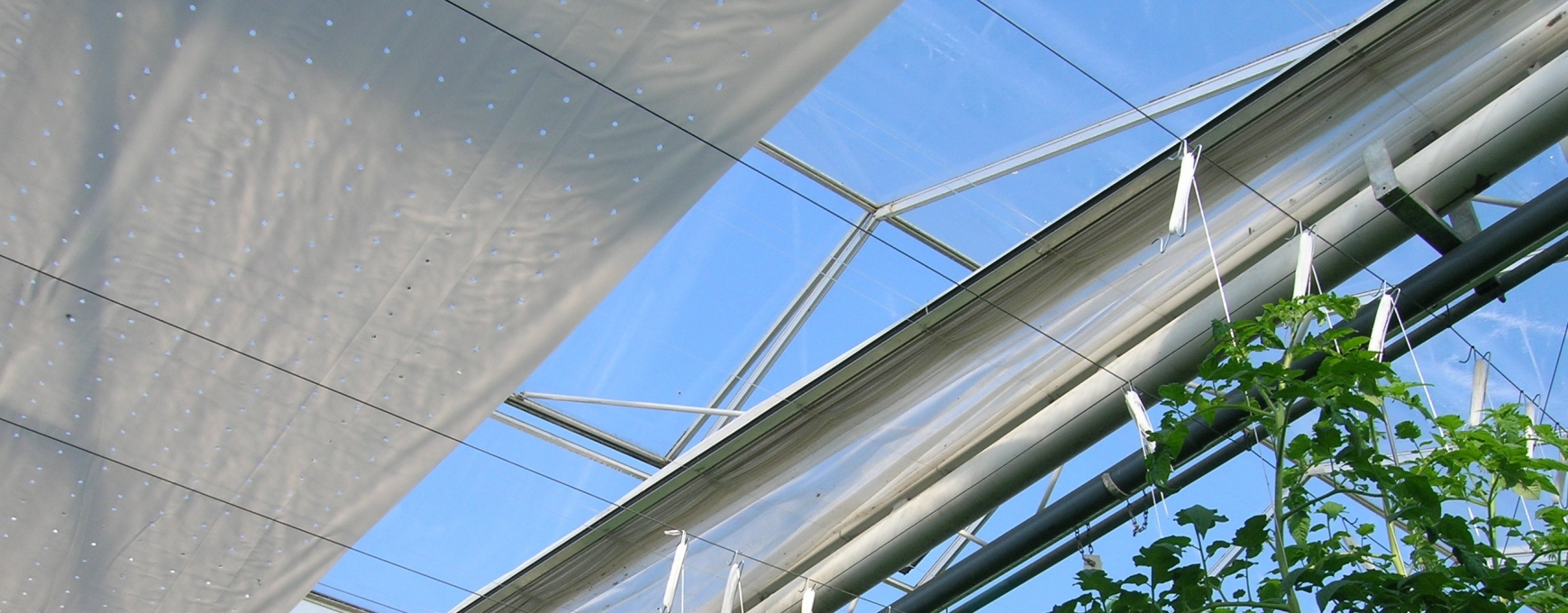The use of screens in horticulture is fairly common these days. Many different types exist, each designed with a specific function in mind. All screens will reduce light transmission to some extent; the most transparent screens will allow around 90% of the light through, while a blackout screen might transmit <0.5%. Obviously, the primary role of a blackout screen is to block light (both incoming and outgoing), whereas a more transparent covering may be used to help retain heat.
It makes sense that by using multiple screens, there is some stacking-up of their light and thermal transmission characteristics. For example, using two screens, both able to transmit 90% of light would reduce light by a total of 19%.
Similarly, the insulating properties are cumulative. Results from tomato trials by Wageningen University & Research have shown that significant energy (gas) savings are achievable when using a second retractable energy screen. The savings depend on the number of hours that the screen is closed, but the research showed a 9-14% reduction in heating when the screen was used for 1,100 to 1,700 hours, although it was only completely closed for 100 to 1,000 hours. Additionally, peak usage was decreased through the use of a second screen on the coldest days, saving around 15W/m2.
By only using the screens on dull days, the amount of daylight ‘lost’ was also kept to a minimum, although this could have an impact on production. Inevitably there is a trade-off between reduced energy costs and loss of production, but the ability to better manage the greenhouse climate by using a second screen could be a valuable benefit.
If you are interested in how to improve light levels in your greenhouse, look out for the upcoming technical update on the subject on the GrowSave website www.growsave.co.uk.


